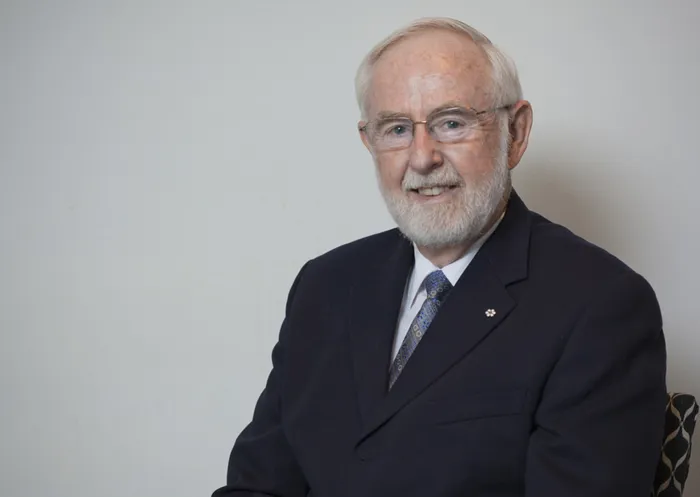Neutrino breakthrough lands two Nobels

Arthur McDonald of Canada, pictured, and Takaaki Kajita of Japan were awarded the Nobel Physics Prize on October 6 for determining that neutrinos have mass, a key piece of the puzzle in understanding the cosmos. Picture: AFP PHOTO / HANDOUT / SNOLAB/ KELSEY MCFARLANE Arthur McDonald of Canada, pictured, and Takaaki Kajita of Japan were awarded the Nobel Physics Prize on October 6 for determining that neutrinos have mass, a key piece of the puzzle in understanding the cosmos. Picture: AFP PHOTO / HANDOUT / SNOLAB/ KELSEY MCFARLANE
It is the second most common substance in the Universe and yet for the past 65 years since it was discovered, the neutrino sub-atomic particle has proven to be remarkably elusive.
Now the two scientists who discovered the one sure thing we do know about the neutrino - that it has mass - have won the 2015 Nobel Prize in Physics, announced yesterday.
Takaaki Kajita, of the University of Tokyo in Japan and Arthur McDonald, of Queen's University in Kingston, Canada share the 800 000 Swedish Crowns (£630 000) prize for showing that neutrinos, one of nature's fundamental sub-atomic particles, oscillated between one form and another and that they are therefore not the massless entities previously believed. The discovery was described by the Nobel committee as “groundbreaking” because it exposed the Standard Model of particle physics - which has survived repeated experimental challenges for more than 20 years - as flawed because it required neutrinos to be without mass.
“The experiments have thus revealed the first apparent crack in the Standard Model. It has become obvious that the Standard Model cannot be the complete theory of how the fundamental constituents of the Universe function,” the committee said.
Neutrinos are generated in nuclear reactors and are produced naturally in vast quantities in the hot nuclear core of stars as well as in the interactions of cosmic rays in space and in the atmosphere.
Only light photons - which are without mass - are more numerous. Neutrinos pervade the Universe, travelling as near the speed of light showing little or no interaction with other forms of matter.
In fact, neutrons are so non-reactive that they pass straight through solid objects the size of planets. Billions pass through each one of us every second and for more than half a century scientists thought they must be without any mass - how else to explain why they are so elusive?
However, Kajita and McDonald, working independently of one another and using different kinds of underground neutrino detectors discovered that neutrinos can change or oscillate between one of three different kinds of “flavours”, known as electron, muon and tau neutrino.
“The discovery has changed our understanding of the innermost workings of matter and can prove crucial to our view of the Universe,” said the Nobel committee in Stockholm.
In a phone call yesterday from his home in Canada to a press conference in Stockholm, Professor McDonald said he knew he had made a key discovery when he realised that the neutrinos he was studying streaming from the Sun were oscillating from one state to another.
“Yes, there was that Eureka! moment,” he said.
The Independent